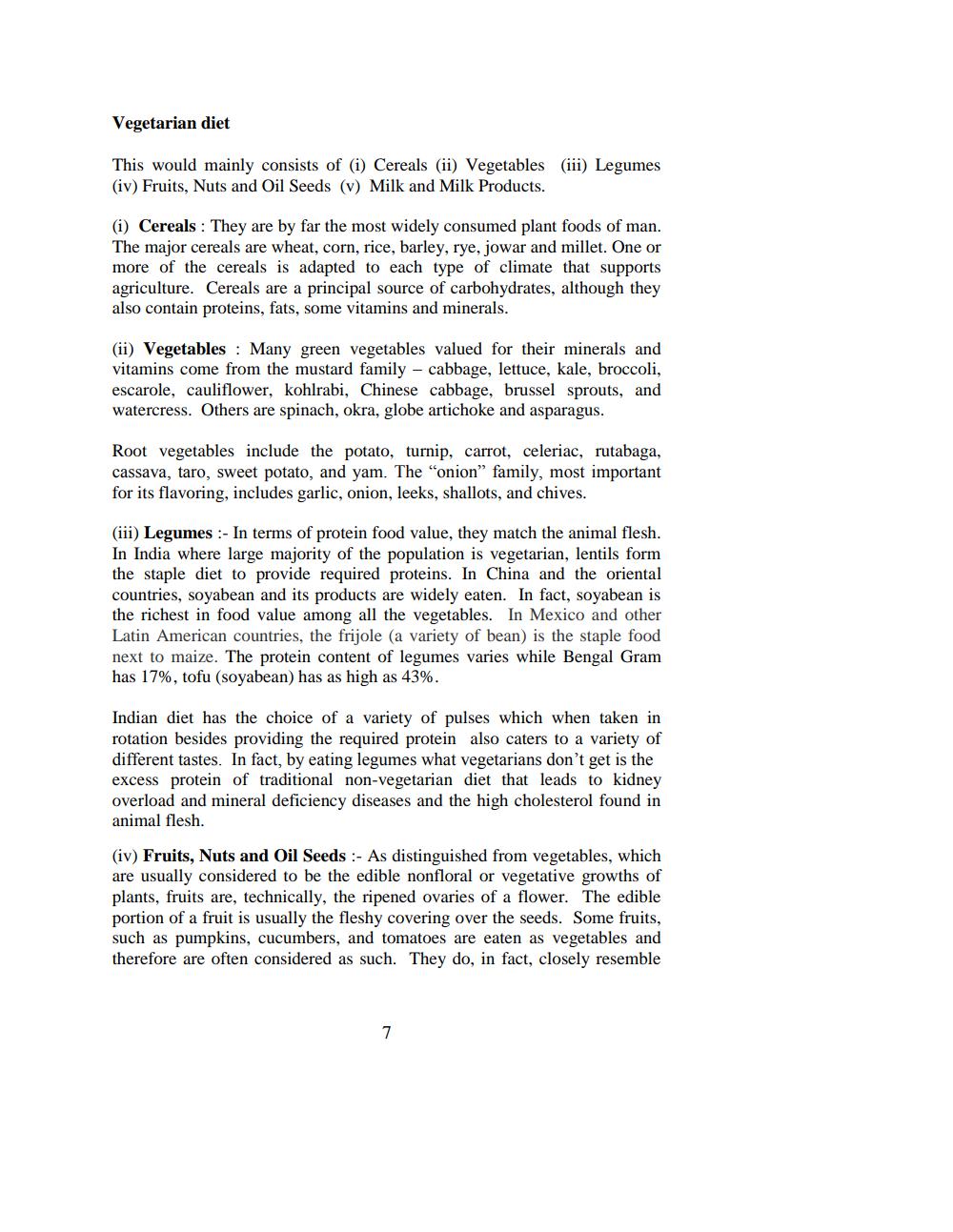Book Title: Vegetarianism Scientific And Spiritual Basis Author(s): Jashwant B Mehta Publisher: Jashwant B Mehta View full book textPage 8
________________ Vegetarian diet This would mainly consists of (i) Cereals (ii) Vegetables (iii) Legumes (iv) Fruits, Nuts and Oil Seeds (v) Milk and Milk Products. (i) Cereals : They are by far the most widely consumed plant foods of man. The major cereals are wheat, corn, rice, barley, rye, jowar and millet. One or more of the cereals is adapted to each type of climate that supports agriculture. Cereals are a principal source of carbohydrates, although they also contain proteins, fats, some vitamins and minerals. (ii) Vegetables : Many green vegetables valued for their minerals and vitamins come from the mustard family - cabbage, lettuce, kale, broccoli, escarole, cauliflower, kohlrabi, Chinese cabbage, brussel sprouts, and watercress. Others are spinach, okra, globe artichoke and asparagus. Root vegetables include the potato, turnip, carrot, celeriac, rutabaga, cassava, taro, sweet potato, and yam. The "onion" family, most important for its flavoring, includes garlic, onion, leeks, shallots, and chives. (iii) Legumes :- In terms of protein food value, they match the animal flesh. In India where large majority of the population is vegetarian, lentils form the staple diet to provide required proteins. In China and the oriental countries, soyabean and its products are widely eaten. In fact, soyabean is the richest in food value among all the vegetables. In Mexico and other Latin American countries, the frijole (a variety of bean) is the staple food next to maize. The protein content of legumes varies while Bengal Gram has 17%, tofu (soyabean) has as high as 43%. Indian diet has the choice of a variety of pulses which when taken in rotation besides providing the required protein also caters to a variety of different tastes. In fact, by eating legumes what vegetarians don't get is the excess protein of traditional non-vegetarian diet that leads to kidney overload and mineral deficiency diseases and the high cholesterol found in animal flesh. (iv) Fruits, Nuts and Oil Seeds :- As distinguished from vegetables, which are usually considered to be the edible nonfloral or vegetative growths of plants, fruits are, technically, the ripened ovaries of a flower. The edible portion of a fruit is usually the fleshy covering over the seeds. Some fruits, such as pumpkins, cucumbers, and tomatoes are eaten as vegetables and therefore are often considered as such. They do, in fact, closely resemblePage Navigation
1 ... 6 7 8 9 10 11 12 13 14 15 16 17 18 19 20 21 22 23 24 25 26 27 28 29 30 31 32 33 34 35 36 37 38 39 40 41 42 43 44 45 46
